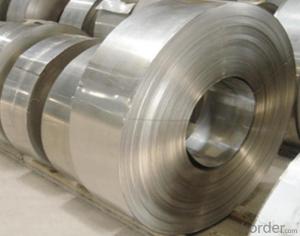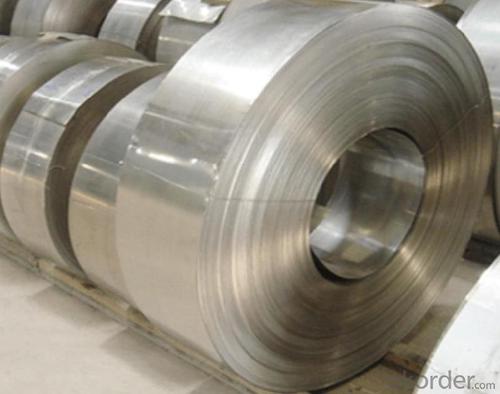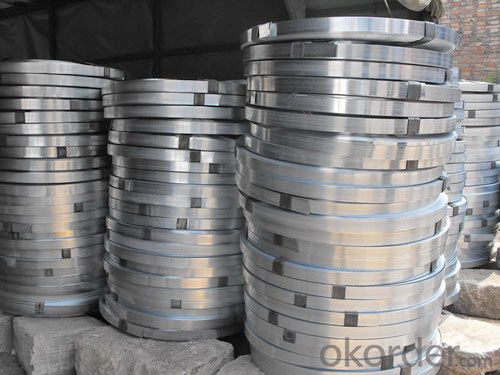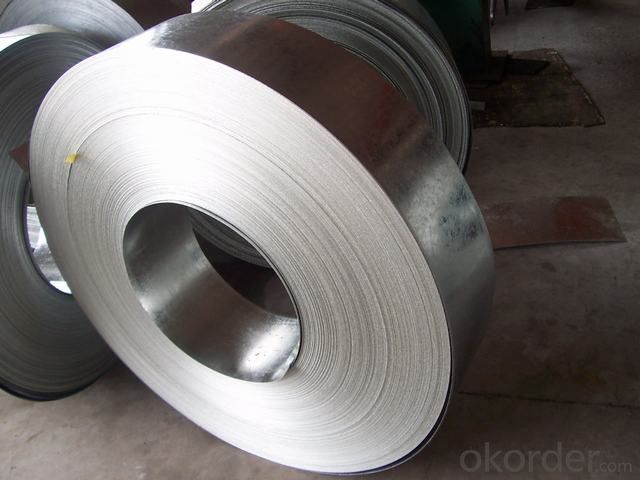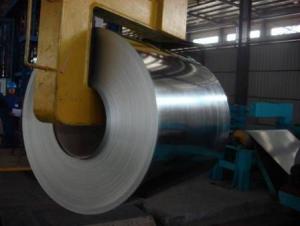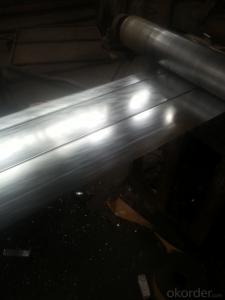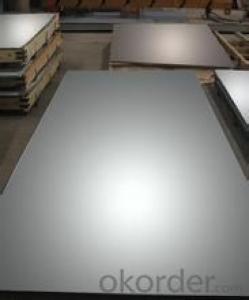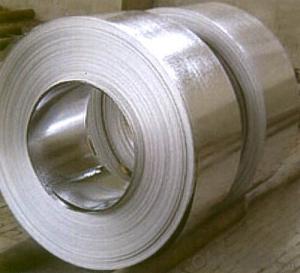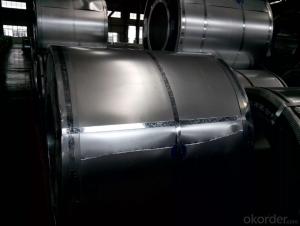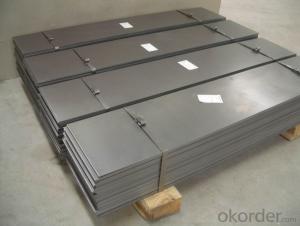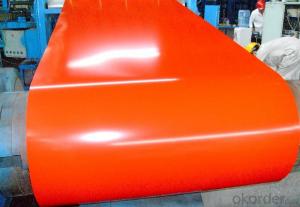Hot Galvanized Steel Strip
- Loading Port:
- China Main Port
- Payment Terms:
- TT OR LC
- Min Order Qty:
- -
- Supply Capability:
- -
OKorder Service Pledge
Quality Product, Order Online Tracking, Timely Delivery
OKorder Financial Service
Credit Rating, Credit Services, Credit Purchasing
You Might Also Like
Specifications
Hot & Cold rolled galvanized steel strip with excellent quality and various thickness
HOT GALVANIZED STEEL STRIP
Materail: Q195 steel sheet.
Processing technique: Hot & electric rolled galvaznized
| adopt wide hot galvanized strip produced by famous company as Bao Steel which has even thickness |
| we introduce a new complete set of cutting technology |
| keep steady precision |
| reduce waste of material farthest |
| adopt physical technique in order to make the galvanized level thicker |
| enhance the rustproof capability |
| adopt non-chrome passivation technique |
| protect the environment against pollution |
| adopt level pressure technique and inert gases protect technique |
| make the galvanized level brighter |
| delay oxidation phenomenon in natural environment |
- Q: Can steel strips be used for making utensils?
- Yes, steel strips can be used for making utensils.
- Q: What are the weight considerations for steel strips?
- Weight considerations for steel strips primarily depend on the intended application and the specific requirements of the project. Factors such as the thickness, width, and length of the steel strip, as well as the type and grade of steel used, determine its weight. Additionally, the weight of steel strips can impact transportation, handling, and installation processes. Therefore, it is crucial to carefully consider weight specifications to ensure efficient and safe use of steel strips in various industries like construction, manufacturing, or automotive sectors.
- Q: What industries use steel strips?
- Steel strips are used in a wide range of industries including automotive, construction, manufacturing, packaging, and aerospace.
- Q: How do steel strips perform in precision engineering?
- Steel strips are highly beneficial in precision engineering as they offer excellent dimensional stability, uniformity, and precise mechanical properties. Their high strength-to-weight ratio, durability, and resistance to deformation make them ideal for various applications such as automotive, aerospace, and manufacturing industries. Additionally, steel strips can be easily machined, formed, and welded, allowing for precise customization and efficient manufacturing processes in precision engineering.
- Q: What is the typical electrical conductivity of steel strips?
- The typical electrical conductivity of steel strips is relatively low compared to other metals, ranging from 6 to 20 percent of the conductivity of pure copper.
- Q: What are the different surface finishing methods for steel strips?
- There are several different surface finishing methods available for steel strips, each offering unique benefits and characteristics. 1. Hot-dip galvanizing: This is a popular method where the steel strip is immersed in a bath of molten zinc. The zinc coating provides excellent corrosion resistance and protects the steel from the elements. 2. Electroplating: In this method, a thin layer of metal is deposited onto the steel strip through electrolysis. Common metals used for electroplating include chromium, nickel, and zinc. Electroplating enhances the appearance of the strip and provides added protection against corrosion. 3. Powder coating: This process involves applying a dry powder onto the steel strip, which is then baked in an oven. The heat causes the powder to melt and form a durable and attractive coating. Powder coating offers excellent corrosion resistance and can be customized in various colors and finishes. 4. Painting: Steel strips can be painted using different types of coatings, such as epoxy, polyurethane, or enamel. The paint provides aesthetic appeal and also acts as a barrier against corrosion and weathering. 5. Passivation: This method involves treating the steel strip with a passivating agent to remove any contaminants and create a protective oxide layer on the surface. Passivation improves the resistance of the steel against rust and corrosion. 6. Anodizing: Typically used for aluminum, anodizing can also be applied to steel strips. In this process, the strip is treated with an electrolyte, causing a controlled oxidation to occur on the surface. Anodizing provides a durable and corrosion-resistant finish. 7. Mechanical finishing: This method involves mechanically altering the surface of the steel strip to achieve the desired finish. Examples include grinding, polishing, brushing, or shot blasting. Mechanical finishing can enhance the appearance of the strip and also improve its surface smoothness. By utilizing these different surface finishing methods, steel strips can be effectively protected against corrosion, improved in appearance, and tailored to meet specific application requirements. The choice of finishing method depends on factors such as the intended use of the strip, desired aesthetics, and environmental conditions it will be exposed to.
- Q: What are the stacking guidelines for steel strips?
- The stacking guidelines for steel strips typically include ensuring a stable and level base, using dunnage or spacers between layers to prevent damage, and maintaining proper weight distribution to avoid collapse or deformation. It is also important to consider weather conditions, such as wind and rain, and to follow any specific instructions provided by the manufacturer or industry standards.
- Q: How are steel strips used in the production of agricultural equipment?
- Steel strips are often used in the production of agricultural equipment to provide strength, durability, and stability. They are commonly used in the construction of machinery such as plows, cultivators, and seeders to reinforce the structural components and improve their overall performance. Steel strips are also used for fabricating brackets, supports, and other critical parts that require high strength and resistance to wear and tear.
- Q: What are the main factors affecting the fracture toughness of steel strips?
- The main factors affecting the fracture toughness of steel strips include the chemical composition of the steel, the microstructure of the material, the presence of defects or impurities, the heat treatment process, and the loading conditions during testing or application.
- Q: How are steel strips inspected for internal defects?
- Various non-destructive testing methods are employed to inspect steel strips for internal defects. Ultrasonic testing is a common technique whereby high-frequency sound waves are transmitted through the steel strip. If there are any internal defects such as cracks, voids, or inclusions, the sound waves will be reflected differently, enabling sensors to detect these reflections. By analyzing the reflection pattern, the size, shape, and location of the internal defects can be determined. Another method utilized is magnetic particle inspection. This technique involves magnetizing the steel strip and applying iron particles onto its surface. Internal defects disrupt the magnetic field within the strip, causing the iron particles to cluster around them. This clustering can be visually observed and indicates the presence of internal defects. Liquid penetrant testing is also utilized to inspect steel strips for internal defects. This process entails applying a liquid dye penetrant to the strip's surface. The dye permeates any surface openings, such as cracks or voids, and is allowed to dwell for a specific period. Afterward, the excess dye is removed, and a developer is applied. The developer draws the remaining dye out of the defects, making them visible and easily detectable under appropriate lighting conditions. Furthermore, eddy current testing can be employed to inspect steel strips for internal defects. This method involves passing an alternating current through a coil, generating an electromagnetic field. As the coil is moved along the strip's surface, sensors detect any variations in the electromagnetic field caused by internal defects. These variations are then analyzed to identify the presence and characteristics of internal defects. In summary, these non-destructive testing methods offer reliable and efficient means of inspecting steel strips for internal defects without causing any harm to the material. They play a crucial role in ensuring the quality and integrity of steel strips before their use in various applications.
Send your message to us
Hot Galvanized Steel Strip
- Loading Port:
- China Main Port
- Payment Terms:
- TT OR LC
- Min Order Qty:
- -
- Supply Capability:
- -
OKorder Service Pledge
Quality Product, Order Online Tracking, Timely Delivery
OKorder Financial Service
Credit Rating, Credit Services, Credit Purchasing
Similar products
Hot products
Hot Searches
Related keywords
